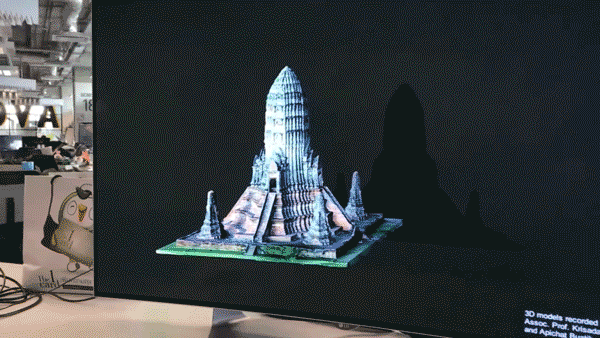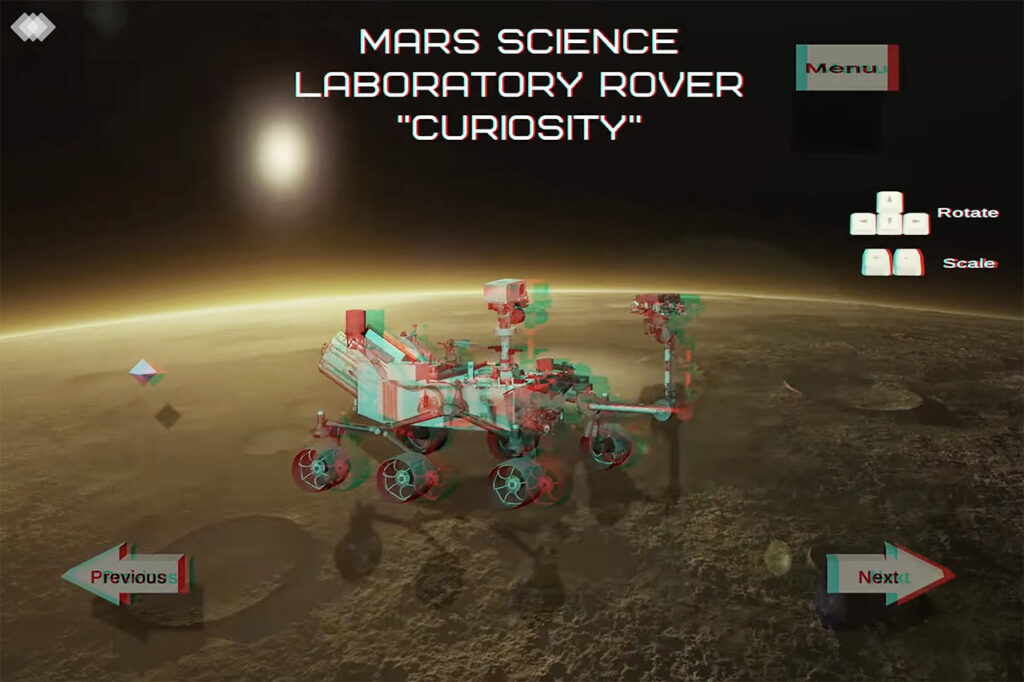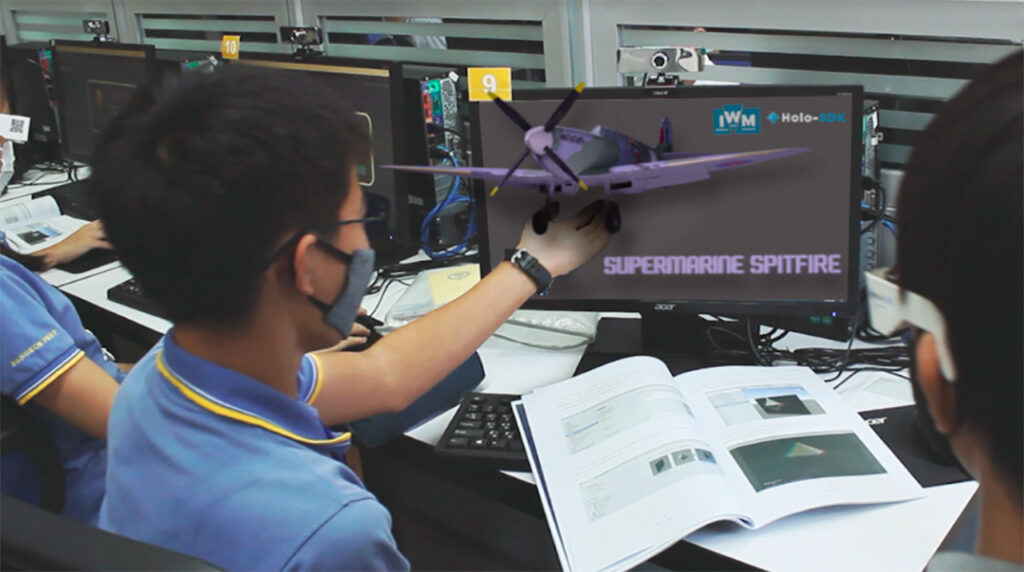In July, British museum organizations Imperial War Museums (IWM) and the Science Museum Group (SMG) announced a partnership with Thai deep-tech company, Perception. The team-up would allow Perception to access IWM and SMG collections, and render them into 3D holograms for educational purposes. These holographic works will form the core of an initiative, supported by the British government’s Global Entrepreneur Programme, which is expected to reach more than 20,000 students in Thailand and the UK.
With a working computer, webcam, and anaglyph glasses, students will be able to engage with the holographic images via Perception’s Desktop AR application, which enables a 2D monitor to present 3D images, while simultaneously tracking user head movements to ensure the images’ dimensional integrity from every angle.


Holographic renderings by Perception’s software, seen with (above) and without (below) anaglyph glasses. Images: Perception
While working at IBM, Sirisilp Kongsilp, Founder and CEO of Perception, came across holographic technology and saw how it could be applied to the arts space. “I found out that the technology democratizes immersive experiences [by allowing] everyone to enjoy holographic experiences without having to pay $3,500 for an augmented reality headset,” he tells Jing Culture and Commerce.
According to Kongsilp, Perception handles the production of the entire immersive experience. “We add narrative voice, interactive text. We can make it interactive, all the while, everything seems to be floating in front of the screen,” he says. As such, Krisada Chaiyasarn, CTO of Perception, notes, the barrier for museums to adopt holographic technology is low. “All museums have historical artifacts, and they are already digitizing their contents,” he tells JCC. “Perception adds to that value by bringing digitized collections into reality and make them more immersive.”

For Perception’s Dr. Sirisilp Kongsilp, holographic technology “democratizes immersive experiences,” offering users new ways to engage with a museum’s collection. Image: Perception
For cultural institutions, finding ways to reanimate history can be challenging. IWM and SMG’s adoption of holographic technology shows the possibilities for extending the reach and utility of their collections beyond traditional exhibitions and further into the educational sphere. As Gill Webber, Executive Director of Content and Programmes at IWM, said in a statement, “There is a real desire within the museums sector to reach new audiences and explore innovative ways of sharing their collections. This technology is an exciting way to explore this.”
While museums are increasingly finding their way to technologies like virtual reality and augmented reality, Kongsilp believes that holographic technology brings a new degree of accessibility. He envisions a centralized platform that will allow museums to share their collections holographically — “like Netflix for museum content,” he says — ultimately benefiting the reach and income of cultural institutions. “We want to bring historical artifacts to students around the world,” he says, “and also help museums establish a new method for bringing in revenue.”



